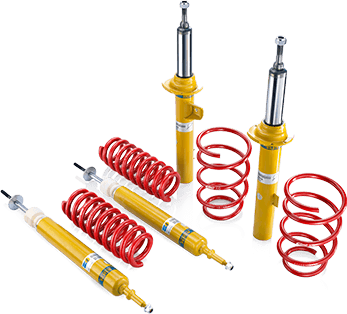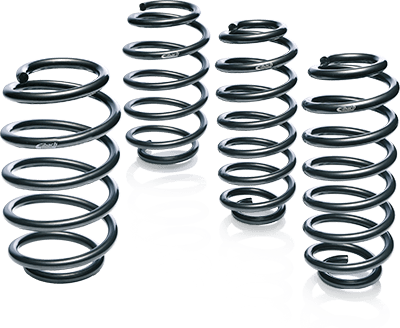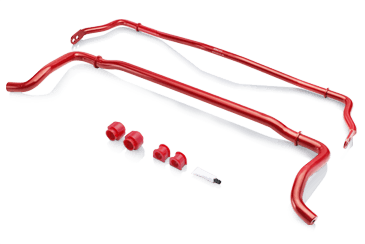Eibach technology for best performance
The chassis of an automobile provides the essential basis for bringing the power of modern engines effectively and purposefully onto the road. Thus an optimally tuned chassis is the ideal way to superior performance and stable peak values. Both in motor sports and in daily use. Eibach components are appreciated around the world for the perfect interaction of springs, shock absorbers and suspension – thanks to years of experience and extensive testing. Find out more about how everything fits together and improve your basic knowledge here:

The chassis
The chassis is the most important interface between the road surface and the body. It ensures driving comfort as well as convincing driving dynamics and safety through optimum power transmission in the contact zone with the road surface. As a complex combination of parts, the chassis includes joints, rubber mounts, steering, brakes, stabilizers, springs, dampers, as well as wheels and tires. The right set-up enables the chassis to decouple the wheel vibrations that occur in order to reduce rolling, yawing and pitching as well as to prevent swinging.

The spring
As the link between body and wheels, the suspension springs have an elementary influence on the performance, road holding and braking behaviour of the vehicle. The springs have to compensate for bumps in the road and ensure safe ground contact of the wheels so that driving, braking and transverse forces can be transmitted safely. In addition, the vehicle springs by definition connect the sprung with the unsprung components – which include wheels, brakes, parts of the wheel suspension and steering. Vehicle springs thus also play an essential role in driving comfort.

The stabilizer
In automotive engineering, the term stabilizer is used to describe a rod with multiple bends that connects the wheel suspension of both wheels of an axle to each other and to the body. As a component of the chassis, the stabilizer reduces the roll angle when cornering and determines the self-steering behaviour at high lateral accelerations. This prevents the uneven deflection of the two opposite wheels and thus also the overturning of the vehicle in curves.